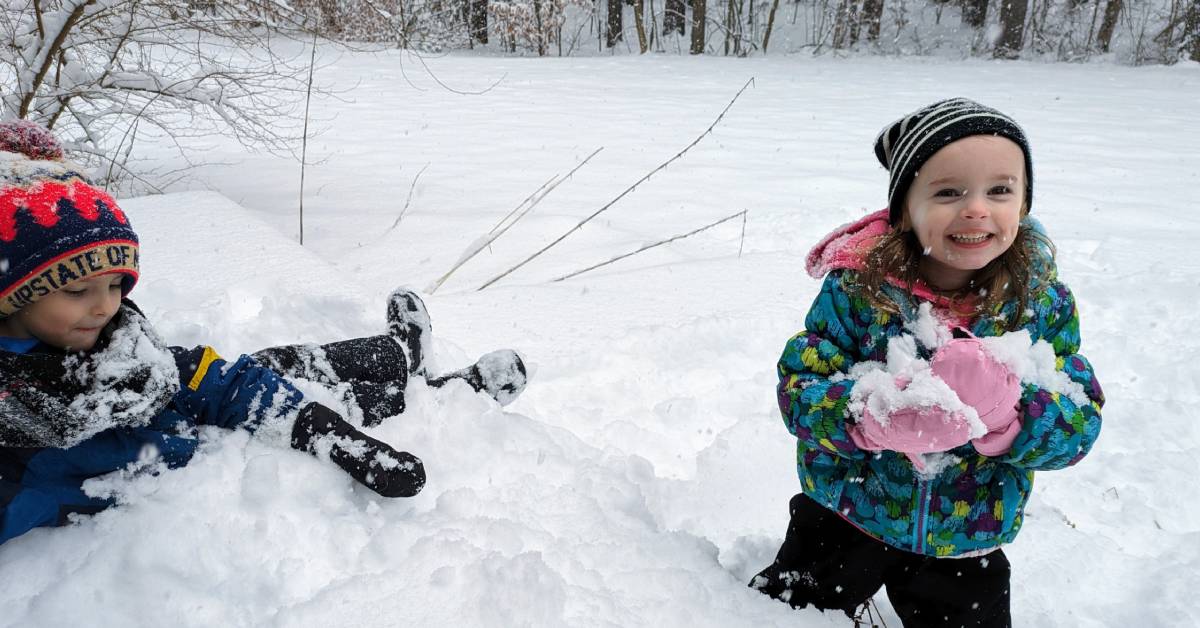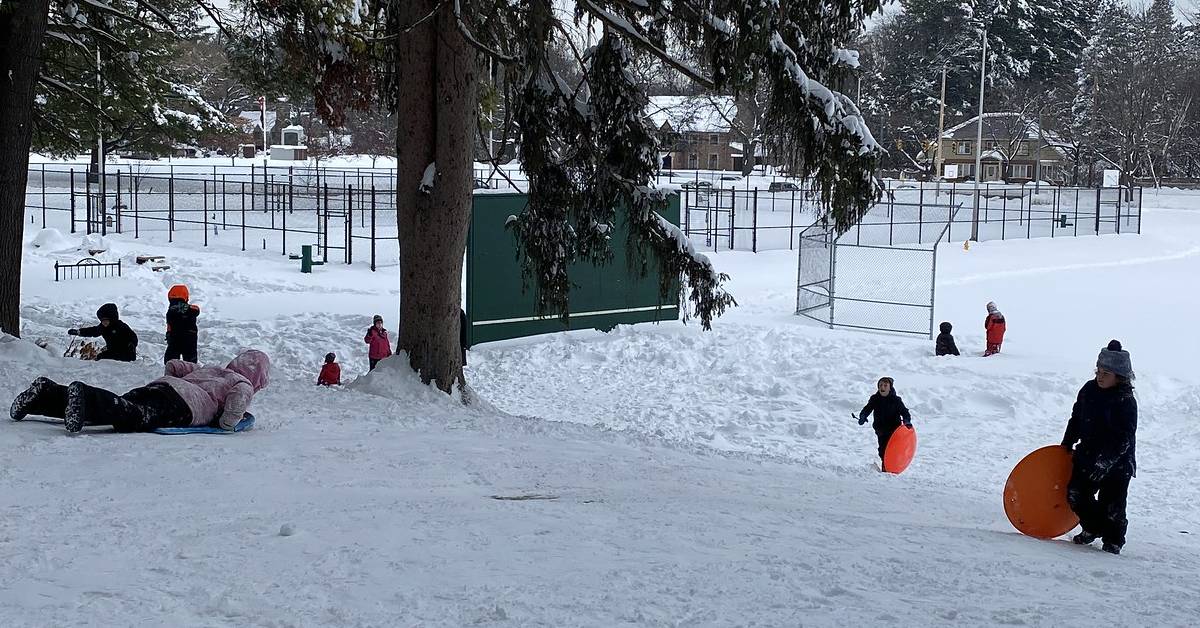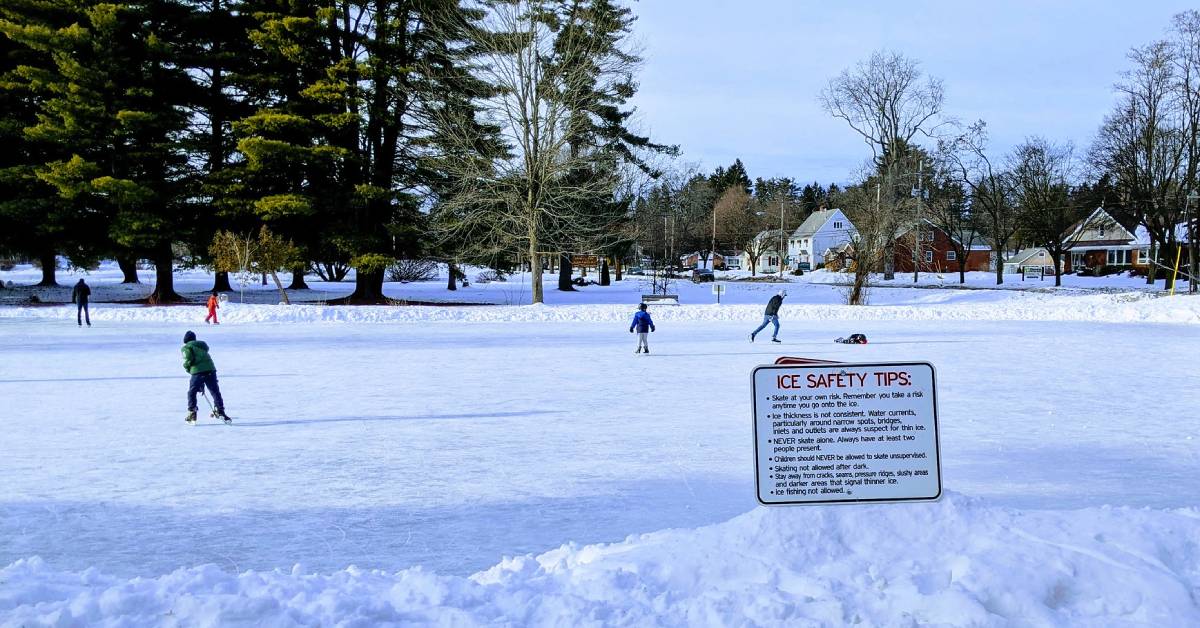Snow Safety for Young Children: Keep Them Warm & Safe This Winter
Find Tips for Playing Outside, Skiing, Sledding & More
Skiing, sledding, and snowball-making can be a blast, but parents should first make sure their kids are properly prepared for the winter conditions before everyone heads out to play. Check out our tips below.

Stay Warm in the Winter - Avoid Frostbite & Hypothermia
Frigid temperatures can be dangerous in the winter, leading to frostbite or hypothermia. Dress your kids in removable layers that are waterproof and moisture-wicking, along with a hat, mittens or gloves, and snow boots.
Check on your kids to see if they're wet, and have them come inside for a warm drink from time to time.
Don't let your kids play outside during extreme weather conditions, such as snowstorms and when the temperature gets under 16 degrees F. The wind chill should also play a factor in your decision to let the kids out.
See tips for preventing frostbite and hypothermia >>

Top 10 Safety Tips for Playing in the Snow
From busy streets to heavy snow, winter introduces a few new outdoor hazards to the Glens Falls region. Teach your kids how to avoid them so you can feel more confident about their safety.
1. Stay away from snowplows and snow blowers.
2. Never play close to roads, fences, or open water.
3. If you must cross a road, make sure it is clear. Ice can make it hard for drivers to stop
.4. Don't climb on snow banks near roads.
5. Avoid throwing snowballs at people or cars.
6. If you want to build a snow fort or tunnel, have an adult supervise you.
7. Don't put metal objects in your mouth; lips and tongues will freeze to them.
8. Don't eat snow off the ground.
9. Watch out for roofs with hanging icicles and snow.
10. Wear sunscreen; the sun is still dangerous in winter if you're exposed to it for a long time.
Safety Tips for Young Skiers and Snowboarders

If your kids don't want to take lessons, you can help them learn through experience. A ski/snowboard helmet, wrist guards, and goggles are all essential pieces of gear for children.
Although all kids should be supervised while skiing or snowboarding, you should also explain to them how to stay safe themselves.
Have inexperienced kids start on a beginner slope so they can practice going slow and fast, and show them where the trail markers are. And don't forget to dress warmly!
See where to go downhill skiing >>
Tips for Safe Sledding & Tubing

Unlike skiing and snowshoeing, sledding and snow tubing don't require a lot of practice to do, which is why many parents choose to bring their children to a local hill in winter.

In the Glens Falls region, there is a fun saucer sledding hill in Crandall Park that is open to the public as long as there is snow. If you don't own your own saucer sled, West Mountain's tubing park is another option in the area.
West Mountain has employees to help keep everyone safe; if you're at a local sledding hill, it's especially important you watch the children. In most cases, the recommended approach is to have one parent at the top and one at the bottom of a sledding hill.
However, a parent should go down the hill with kids under the age of 5. For extra protection, have your child wear a ski or hockey helmet.
Ice Skating Safety Tips

The general belief for ice skating is that indoor ice rinks are safer than outdoor ice rinks. While that is true, it doen't mean you should completely avoid taking your kids to a frozen body of water.
If you test an outdoor ice rink and believe it's safe, then your kids will definitely have fun on it. You can find indoor rinks at the Cool Insuring Arena and Glens Falls Rec Center. Try outdoor ice skating at Crandall Park or East Field.
Should you decide to check out an outdoor ice skating rink, it's important to know how thick the ice is. The safest ice is blue/clear, and for one person to ice skate on an area, it should be at least 4 inches thick.
For a larger group, the ice should be around 8 inches thick. White and gray ice is weaker and not recommended for ice skating.